Hello and welcome!
As I do each year, I am posting my blog a bit earlier than usual this week, as I am on my way to spend the Thanksgiving holiday with my family. 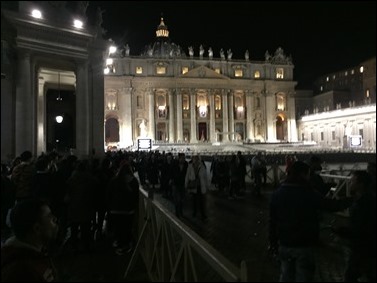
As I mentioned in my previous post, this week I was in Rome for the consistory for the creation of new cardinals and also the closing of the Jubilee Year of Mercy. 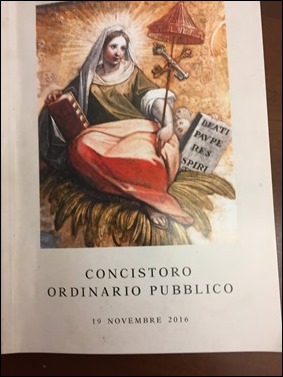
The consistory was held on Saturday morning inside St. Peter’s Basilica.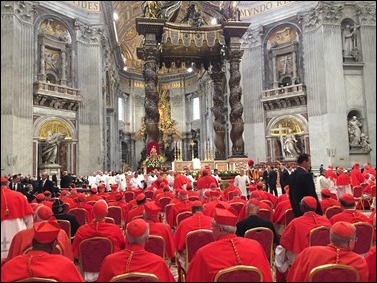
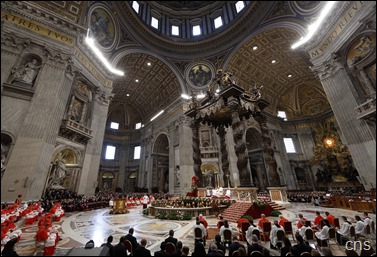
The Holy Father’s homily at the consistory was a very inspiring challenge to work for unity in our world.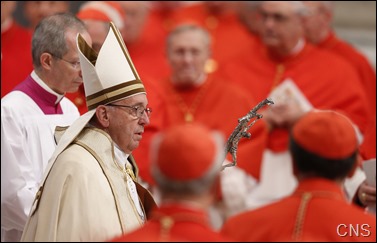
A consistory for us is always a renewal of sorts in the life of the Church. The College of Cardinals renews itself so that the number of electors is maintained at around 120. The cardinals are made part of the Roman clergy and are assigned churches in Rome, because the pope is the Bishop of Rome and the cardinals are part of his clergy. We were very pleased that three American cardinals were named.
It is tradition that, following the consistory, each of the new cardinals greets guests and well-wishers at different places throughout the Vatican.
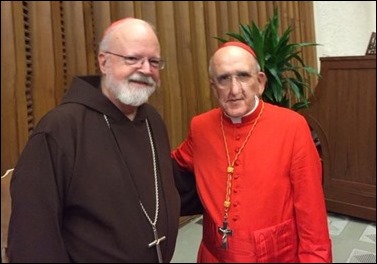
With Cardinal Osoro of Madrid

With Cardinal Zenari, Nuncio to Syria

With Cardinal Cupich
The Holy Father continues to name cardinals from many dioceses — and even countries – that never had cardinals before, including Port Maurice, Papua New Guinea. Of course for the United States, it was the first time that we had a cardinal in Indianapolis, Cardinal Joseph Tobin, who also has the honor of being the first cardinal in Newark, New Jersey! 
Of course, Cardinal Kevin Farrell has the daunting task of establishing the new Dicastery for the Laity, Family and Life. But I know that he’s a very capable bishop and is someone I’ve known for many years, because he took my place as the director of the Hispanic Catholic Center in Washington when I became bishop in the Virgin Islands.
– – –
Sunday was the Mass marking the close of the Jubilee Year of Mercy. There were huge crowds for the outdoor Mass on a picture-perfect day.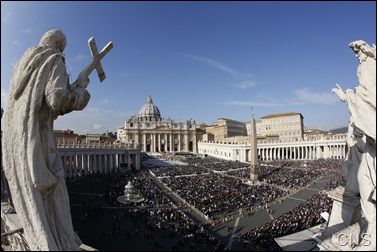
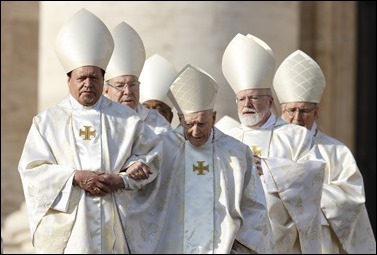
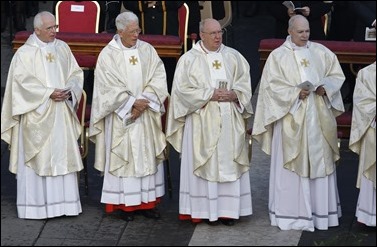
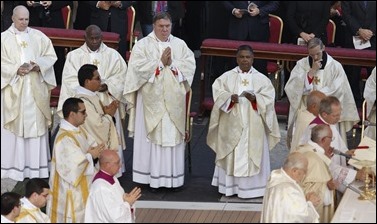
The Mass began with the closing of the Holy Door. 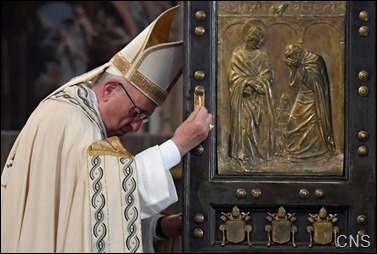
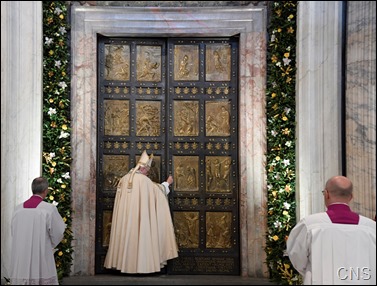
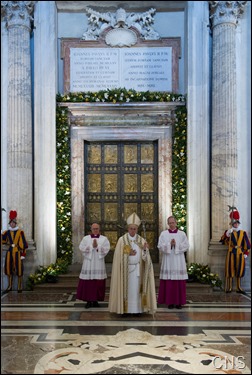
At the end of the Mass, the Holy Father signed a new Apostolic Letter, "Misericordia et Misera" (“Mercy and Misery”), that will help us continue the Holy Year’s spirit of mercy. In it, the Holy Father asks dioceses to extend the practice of celebrating 24 Hours for the Lord in Lent and establishes the new World the Day for the Poor on the 33rd Sunday in Ordinary Time. 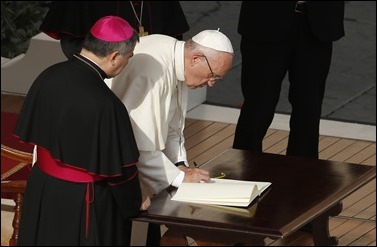
Also, as was very widely publicized, he extended the permission that he had given during the Holy Year for all priests to forgive sins related to abortion. Previously, those were “reserved sins” that could only be absolved with permission of the bishop. However, in every diocese that I have been in, I have extended that faculty to all my priests for the same reason the Holy Father did — to make reconciliation more accessible to those who seek it. The Holy Father, obviously, wanted to underscore that God’s mercy is always available to us and to present the Church as an inclusive church, inviting people to return to the sacraments.
One of my thoughts on the Year of Mercy that I shared frequently is that it was our hope that this special year would be a preface to the Church’s focus on this very central theme of the Gospels and our faith, which is mercy. This apostolic letter is putting forth ideas that can help us to continue this most successful spiritual event.
To my mind, this is been one of the most successful Holy Years I have ever experienced. I think that the participation at the local level has been just incredible – we had almost 4,000 groups come to visit the Cathedral over the course of the year to pass through the Holy Door of Mercy and go to confession, and many people in different parishes committed themselves to perform works of mercy. I also know that many people who had been in difficult relationships were also reconciled with their friends or family members as a result of the Holy Year.
For us, one of the highlights of the Holy Year was also to have the heart of St. Padre Pio come to our archdiocese, and many thousands of pilgrims came to venerate that relic. The body of Padre Pio had been in St. Peter’s earlier in the Holy Year, underscoring the importance of the sacrament of reconciliation, which was the principal activity of Padre Pio throughout his priesthood.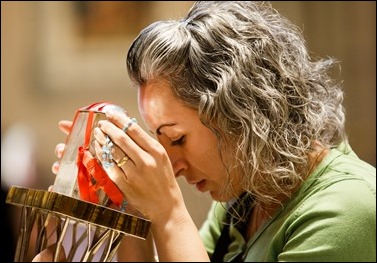
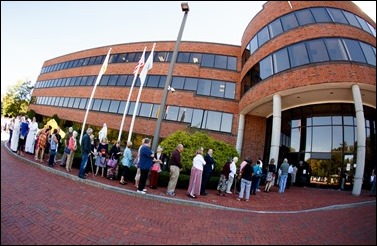
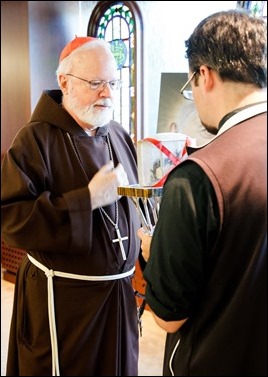
I think the Holy Year resonated so strongly with people for two reasons. First, because the theme was very well chosen. The theme of mercy was something very concrete for people, with the spiritual and corporal works of mercy seen as the “program for the year”, as it were. And secondly, the Holy Father, right from the very beginning, insisted that the primary venue for Holy Year activities be in the local dioceses and parishes. Very often, activities of a Holy Year are very much geared towards Rome. I think that having Holy Doors at all the cathedrals of the world — along with other special places, such as prisons, cloistered convents and nursing homes — demonstrated that the Holy Father wanted it to be very, very accessible.
I think, on many levels, these factors made everyone in the Church aware they were in the Year of Mercy. In other Holy Years, I’m not sure that was the case. I think that, at other times, if you told the average Catholic in the pews that we were in the midst of a Holy Year they might say, “Oh really? And what exactly is that?” But this Holy Year was made very present to people: priests preached about it, there were the 24 Hours for the Lord gatherings at different parishes, special pilgrimages, the blessing of Holy Doors, and other special activities.
In all, I think it was just an extraordinary success for the whole Church.
– – –
Finally, I want to wish you all a very happy and blessed Thanksgiving!
The very idea of “thanksgiving” is at the core of our very being as creatures. Everything that we have, and everything that we are, is a gift. It is also a reminder of how dependent we are on God and on others.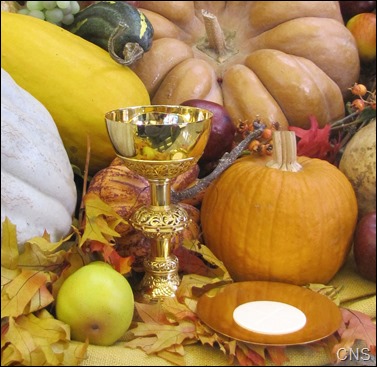
So, at Thanksgiving, we express our gratitude for the abundant love and gifts – and the gratuitousness of those gifts – that we have received, not because we deserve them, but because God loves us so much. One of the ways that we express our gratitude is by sharing those gifts with others. As St. Paul says, God has made us rich so that we can be generous. All of us are rich in spiritual gifts, and the Lord is inviting us to put those at the service of others as an expression of our thanksgiving to the Lord.
Thanksgiving is such a wonderful holiday. So many of our celebrations in the United States have become very commercialized, yet this is one that still maintains a very spiritual tone. It is a celebration that is about gathering families together in love and gratitude to and for God’s gifts. I think it is truly one of the most beautiful celebrations that we have as a country because, while it embraces all people regardless of their religious affiliation, it is also an acknowledgment of our gratitude to God, whose loving Providence has blessed us so richly as a people.
Happy Thanksgiving!
Cardinal Seán
